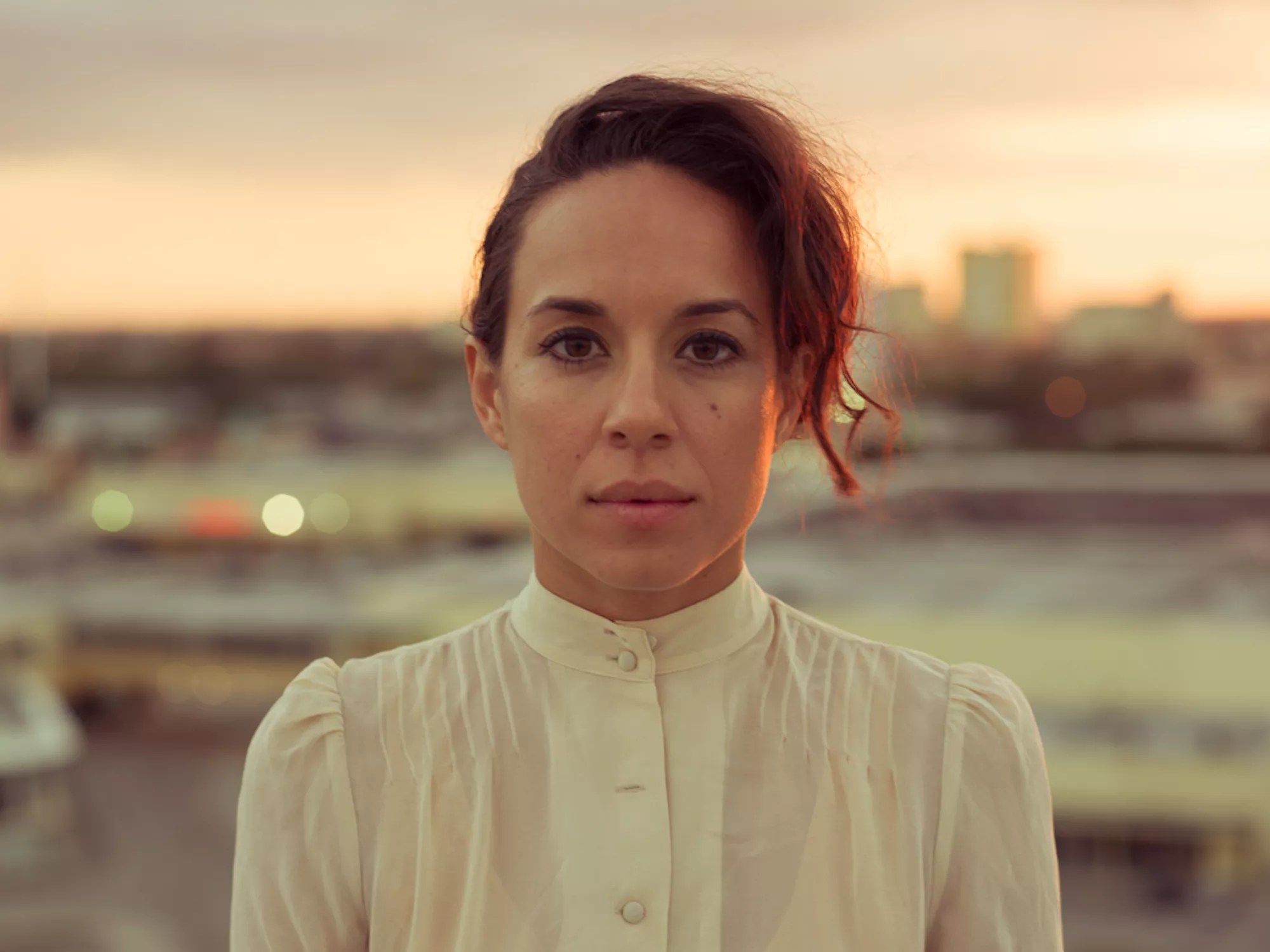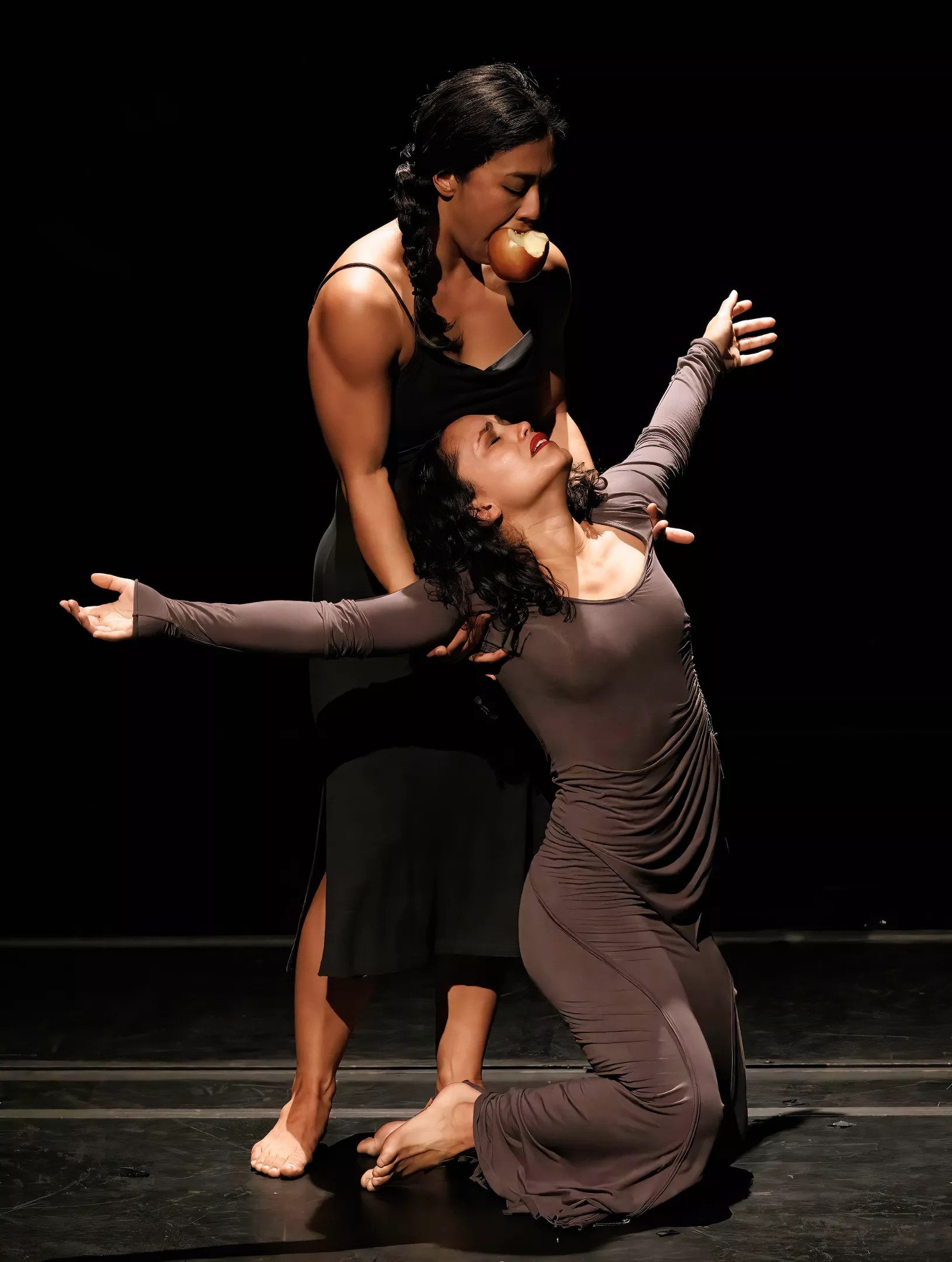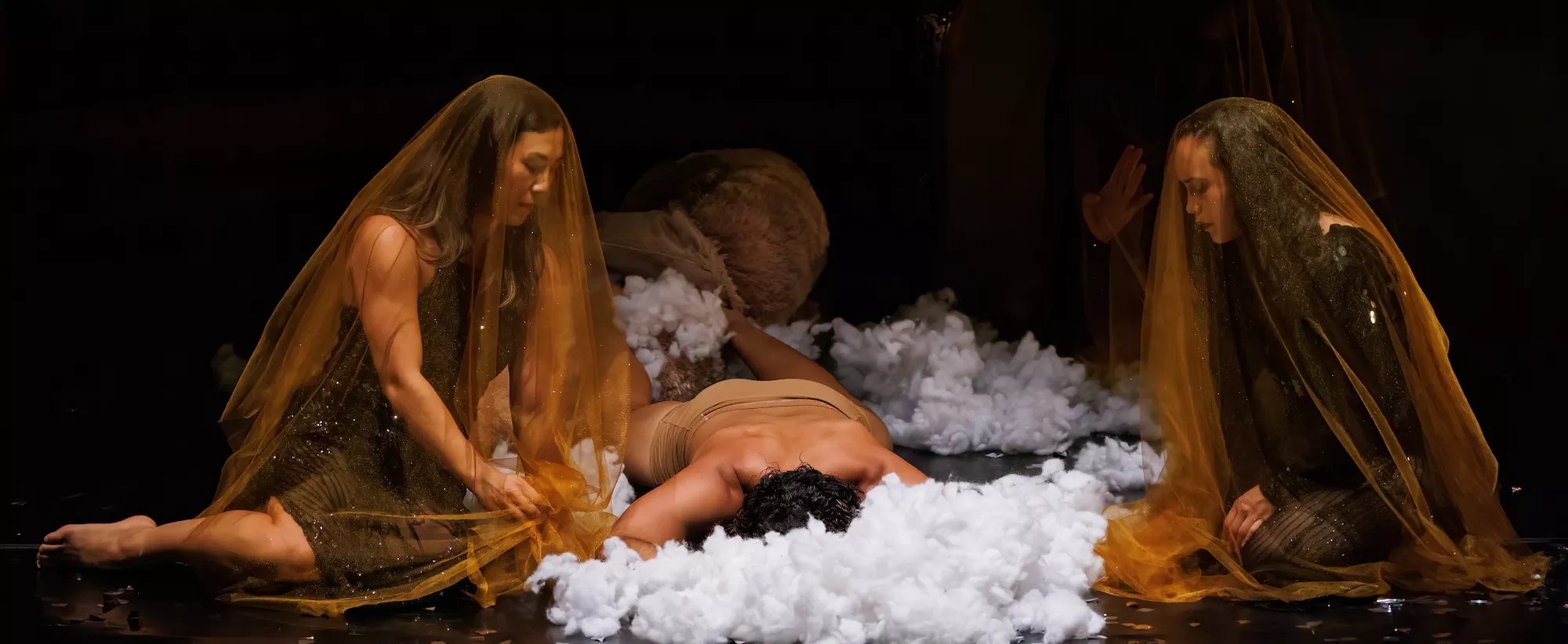
Photo by Ben McKeown

Audio By Carbonatix
We check emails on our laptops each morning, perhaps in search of the message that will answer a prayer. Or, charmed by faraway voices and images, we clutch our cell phones before sleep, gazing into the face of a loved one or an adored celebrity. Compelling us to pay attention to these practices, like a contemporary liturgy of the hours, choreographer Rosie Herrera has dedicated her recent work to instances when the secular rises into sacredness and magic vibrates amid the mundane.
Staging the dance-theater piece Devotion at Miami-Dade County Auditorium on Thursday, August 24, and Friday, August 25, Rosie Herrera Dance Theatre (RHDT) will turn the black box stage through impassioned moves and iconic poses into a shrine for transcendental visions.
“I saw my first performance in that theater and came alive there,” says Herrera, whose father owned a restaurant across the street. “What a full circle moment it is to bring Devotion to the Auditorium, thinking about what I’ve devoted my life to and have sacrificed for, doing so with great joy.”
A 2022 commission from the American Dance Festival (ADF), this last installment of a trilogy dealing with faith and the divine in worldly guises focuses on women at worship and within electronic networks where love withers or thrives.
“For people who know my works,” says Herrera, “this one will seem very different. They’ll be shocked – it’s my darkest. I never thought I’d put a black costume on stage, but thirteen years after starting my own company, here I am.”

Rosie Herrera is a Cuban-American dancer, choreographer, and artistic director of Rosie Herrera Dance Theatre.
Photo by Adam Reign
The brighter scenarios with which she contrasts Devotion are in the years following her graduation from Miami’s New World School of the Arts when her shows matched the wink-wink of sequins under spotlights with the irony of often playful sequences unafraid of roughhousing.
In 2009, Various Stages of Drowning: A Cabaret used water as a motif for what can assault and sustain us. A woman, for instance, was drenched by a hose – it hissed up like a snake in the garden – and a near-naked man stood in splendor in a claw-footed bathtub. The constant stream of quick-take imagery made a splash and caught the attention of Charles L. Reinhart, the ADF leader who mentored Herrera. Reinhart started with commissions of her group’s Pity Party in 2010 and Dining Alone the following year, which played to sold-out houses at the venerable Durham, North Carolina, festival. That partnership has been bolstered by support from Miami Light Project and the Adrienne Arsht Center, ushering Herrera to premieres for Ballet Hispánico and José Limón Dance Company.
While brash and often rollicking, Herrera’s earlier works were not devoid of yearnings and frustrations, the reverse side of exuberance that the Hialeah-raised artist gleaned from her Cuban heritage and forays into outsider culture, including drag and hip-hop. Her shows could take us clubbing or give us a buzz in quite a bash for the senses, but there was always that startling peek behind the tinseled curtain and sober moments when a beleaguered figure signaled for the warmth and strength of human hands.
For all the pageantry – and this is especially apparent in her trilogy – Herrera points to its roots in religious tradition, explaining, “People say, ‘Oh, Rosie, your work is so glamorous because you were involved in the drag community.’ And I go, ‘Well, no, it’s because I’m Catholic.'”
Aided by research, including conversations with a religion scholar who’s also a romance novelist, Herrera set off on this spiritual journey in 2016 with Carne Viva – literally “live flesh,” meaning a raw wound. The concerns go back to Herrera’s impressions – soul-piercing with their sensorial stabs – of Christ on the cross as she prayed at St. John the Apostle Catholic Church in Hialeah.

Britney Tokumoto and Victora Mora in Rosie Herrera Dance Theatre’s Devotion
Photo by Ben McKeown
“It was my introduction to faith and dogma and even influenced my perception of romance,” says the choreographer. “The images in the sanctuary became a reference for “the violence of transcendence.”
Twenty-eighteen’s Make Believe picked up the religious themes. “I like exploring the same ideas in different ways to see what happens if you take them into another environment,” says Herrera. Underscoring how the iconography of the Church has prevailed, she adds, “I am so imagery-based a lot of times; what comes to me first is an image. When I’m able to exorcise that out of my body and see my relationship to it, I begin to understand its symbolism and capacity. With every piece, my interests – personal and aesthetic – gain clarity.”
Diverging from the pared-down look of Carne Viva but keeping its force, the second piece in the trilogy admitted greater embellishment. For Herrera, Make Believe (which her group will present at Miami Theater Center in Miami Shores on Friday, October 13, and Saturday, October 14) is about “the residue of what’s imprinted on our bodies as children, its effect on how you make a life. It’s an homage to little girls – to the things that drew my eye when I was a child and stayed with me and feel magical.”
Despite that bow to innocence, with its flights of fancy – a bouncy castle figures among the episodes – here the glittery crew, flailing like flagellants, sport red splotches on their costumes like the blood of martyrs, and a dancer comes out dragging the deflated funhouse, invoking Jesus on the via crucis.
Now, with its abundance of impactful imagery, Devotion, according to Herrera, “turns a more reverent eye on the rituals that we already engage in.”
Though the Man of Sorrows and the majesty of his divinity may hover over all – four of the six performers here are female. As Herrera says, “It struck me – Christianity is the religion of the absent father. So, questioning its values, we asked how women worship. What does that look like for us?”

Britney Tokumoto, Luciano Cortes, and Victoria Mora in Rosie Herrera Dance Theatre’s Devotion
Photo by Ben McKeown
This connects with the way technology at present furnishes us with holy objects. Devotion‘s genesis lay in a 20-minute segment of Make Believe, where dancers brandished cell phones, which Herrera cut after the earlier work’s first performance and re-planted for her trilogy’s last installment.
She explains, “I really loved that section, but it was the introduction of a new idea – rather than the completion of one – aiming to dissect contemporary attitudes about faith. It may be controversial to say, but in a society that’s moving away from organized religion – when you talk about it, a lot of times people shut down – the closest thing we have to it is technology. It’s ever-present and has magical qualities. Cell phones have become symbols of our collective consciousness.”
Thus sanctified, technology can be both a burden and a boon. “Just like religion, it can turn fanatical,” admits Herrera. “But it lets me call my father and see his face, and that’s sacred to me. If you’re a queer kid feeling isolated or know no one who looks like you or understands you, then the internet is your friend.”
And screens for many brought salvation during the scourge of COVID. In its fires, Herrera’s dearest impulses boiled down to one: dancing.
“That time was devastating,” she says, “but I never danced more than when my world was completely in question. I danced in my living room. I danced on the beach. I found a way to start dancing safely with my friends.”
And her dancer’s imagination kept the bloom on Devotion, even sending offshoots into short film collaborations. “There’s so much in the subject matter of these works,” she says about the trilogy, “I’m beginning to feel that it’ll never end.”
– Guillermo Perez, ArtburstMiami.com
Rosie Herrera Dance Theatre’s Devotion. 8 p.m. Thursday, August 24, and Friday, August 25, at Miami-Dade County Auditorium, 2901 W. Flagler St., Miami; 305-547-5414; miamidadecountyauditorium.org. Tickets cost $22 via ticketmaster.com.